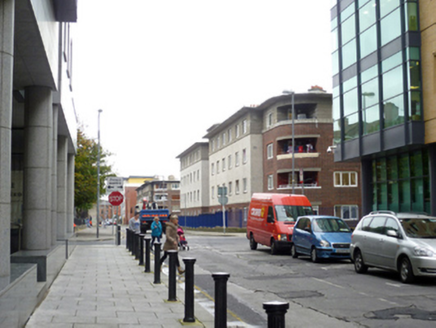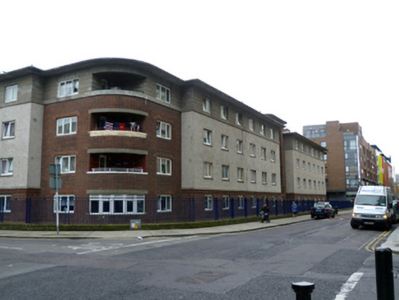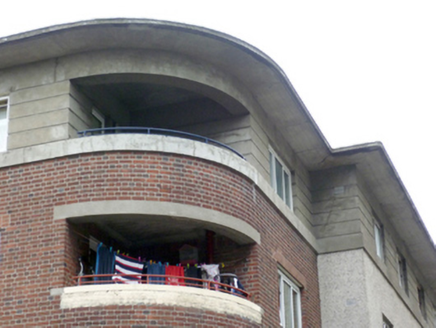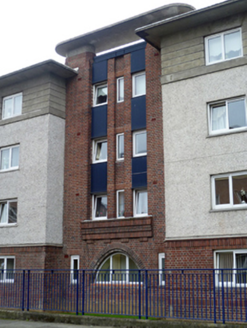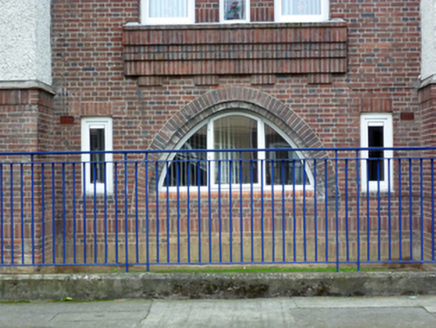Survey Data
Reg No
50011147
Rating
Regional
Categories of Special Interest
Architectural, Historical, Social, Technical
Original Use
Apartment/flat (purpose-built)
In Use As
Apartment/flat (purpose-built)
Date
1930 - 1940
Coordinates
316347, 235006
Date Recorded
14/10/2011
Date Updated
--/--/--
Description
Two four-storey multiple-bay blocks of social housing, built c.1936, L-plan range to east, U-plan range to west set around open square to centre fronting onto Railway Street. Symmetrical front elevations with curved end bays having built-in verandahs and central recessed entrance bays to both ranges. Flat concrete roofs with overhang. Machine-made red brick walls laid in English bond to curved end bays and entire ground floor with soldier brick course to plinth, roughcast rendered to remainder with channel rusticated cement rendered walls to entire third floor. Square-headed window openings with concrete sills and replacement uPVC windows. Recessed entrance bays designed as pair of red brick piers above ground floor surmounted by concrete plinths in turn supporting flat concrete canopy. Tripartite windows to entrance bay with central window flanked by brick piers forming mullion to side windows, having soldier courses at window head level and forming corbelled brick sill to first floor windows. Gauged brick parabolic arched window opening to ground level with stepped brick reveals and flush bull-nose brick sill, timber casement window and flanked by slender windows to base of giant piers. Curved corner bays with recessed balconies above ground floor having curved concrete lintel spanning opening, brick cheeks, flush concrete coping and original steel guard-rails to all verandahs.
Appraisal
These blocks of flats, tendered in 1936, are an early example of the work of Herbert Simms, who filled the newly created post of Dublin Corporation housing architect in 1932. Believed to have been influenced by the work on new apartment blocks, of de Klerk in Amsterdam and J.P. Oud in Rotterdam, they are an important example of the Modern Movement in the newly established Irish Free State. The varying planes, rounded corners and the vernadahs add visual interest and the flat over-sailing eaves are typicalof the era.
